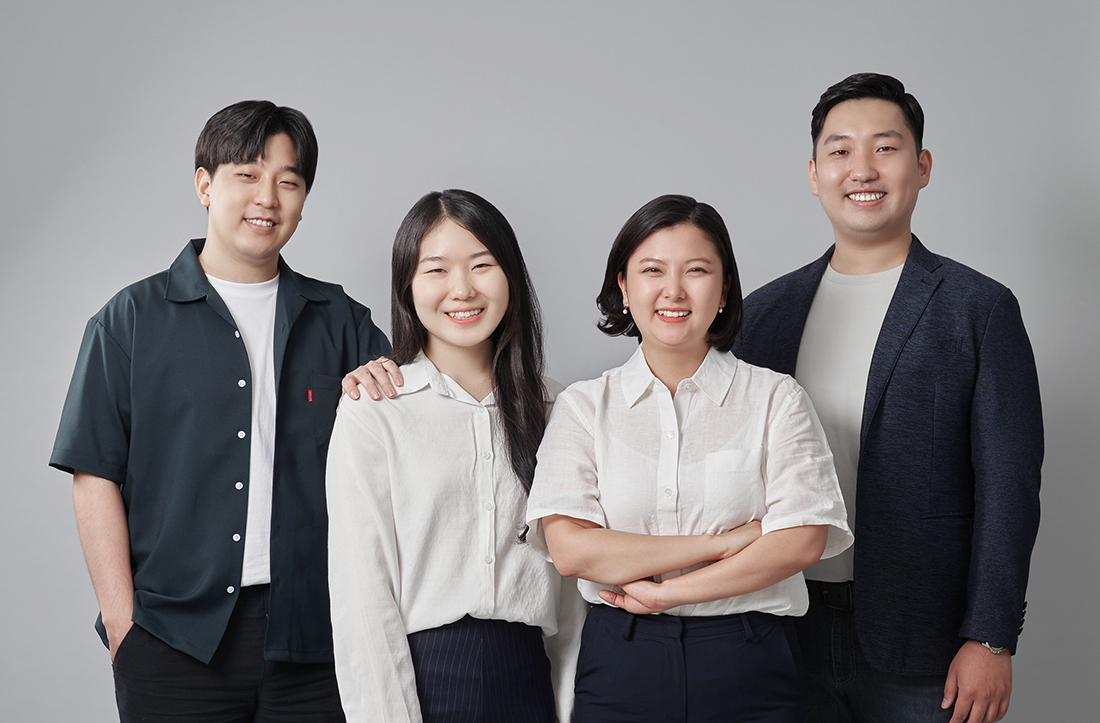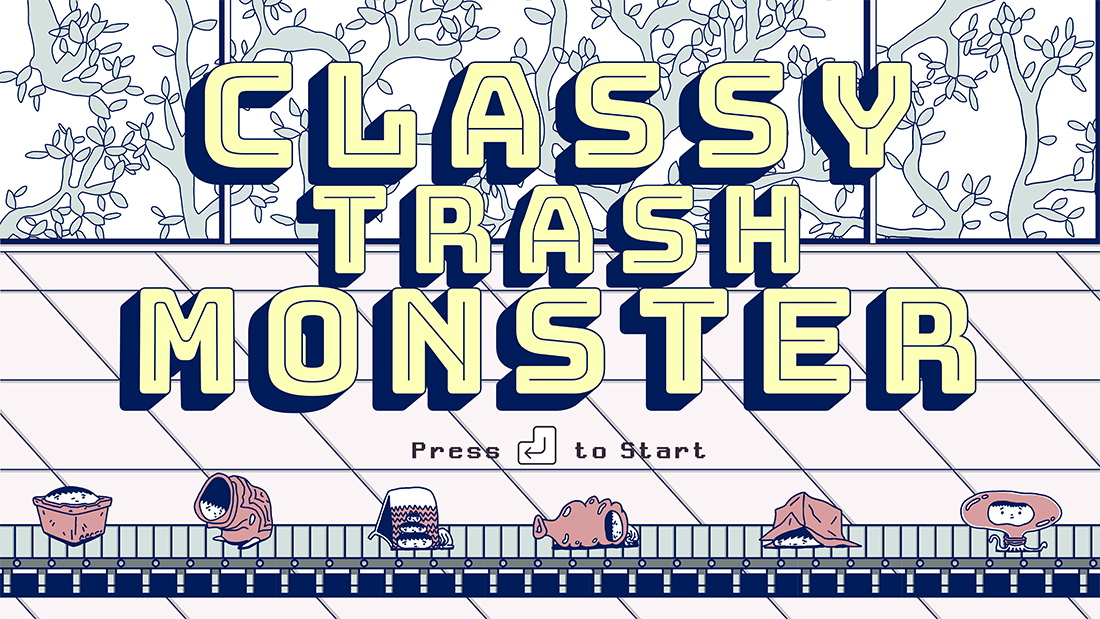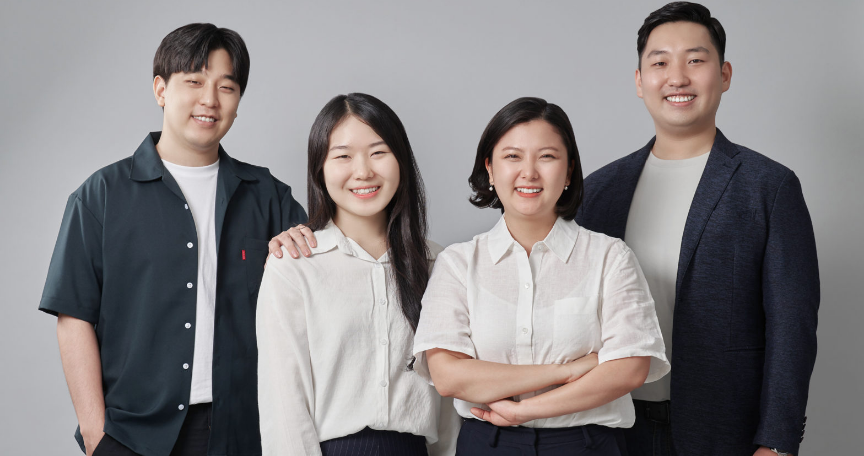NC-KAIST industrial-academic collaborated game design project of 2021 has won in the ‘Transformative and Transgressive Play’ category at Student Game Competition of 2022 ACM Conference on Human Factors in Computing Systems(CHI) held from April 30 to May 5, 2022. NC has been cooperating with KAIST Graduate School of Culture Technology since 2020 to foster future R&D talent and develop game content research. As a part of this effort, a project exhibition combining games and art was held at the Daejeon Museum of Art in 2021. 'Classy Trash Monster (CTM)', which won the international student game competition, was designed produced by students participating in the game design project class based on the active guidance of the faculty of KAIST Graduate School of Culture Technology and practical feedback from NCSOFT’s Game Design Lab.
Partnership for developing game design and nurturing future talents
NC has been conducting the ‘Cultural Contents R&D Professional Training Project’ in cooperation with KAIST Graduate School of Culture Technology since 2020 to foster talent in convergence on culture technology that combines technology, cultural arts, humanities, and society. In this University-Industry cooperation, NC University, AI Center, Sound Center, and Game Design Lab have been participating. The game ‘Classy Trash Monster (CTM)’, which has won the international student game competition, is one of the 2021 results of ‘Game Design Project’, a practice-oriented class jointly planned by NC and KAIST from 2020. The class is conducted with customized guidance from KAIST Graduate School of Culture Technology faculty (Professor Juhan Nam, Young Yim Doh, and Jungmi Lee) and with feedback on the team's production results of NC Game Design Lab. Based on the team teaching of the dedicated faculty and the know-how and feedback from game company’s person in charge in the process of game production, KAIST students can accumulate academic achievements in the field of future game R&D and practical experience by designing and producing games on their own.
Game Design Lab, NC's game design research organization, suggests various game design methods and identifies principles by investigating design elements for successful games. Based on unmatched know-how, Game Design Lab has led students to come up with ideas, form research topics, demonstrate, and provide feedback and in the process of designing games by having university-industry cooperation with KAIST.
'Classy Trash Monster' (student team: Haram Kwon, Joonhyung Bae, Karam Eum, and Seolhee Lee: joint design), which has won the Transformative & Transgressive Play (on the social impact of games) category in the 2022 International Student Game Competition, is the direct result of the game design project class in 2021. The category of Transformative & Transgressive Play considers not only the game as a tool for fun, but also its social impact. When evaluating games, it also focuses on the extendibility that can have an impact in various social fields such as education, medical care, urban planning, and sustainability to determine whether 'innovations can be made with games in fields which has not been traditionally considered the realm of games'.


Getting to know machine learning while classifying trash monsters
‘Classy Trash Monster (CTM)’, which won this competition, is a game designed to help non-majors with no background in computer science or artificial intelligence learn machine learning in a natural way. The development team named it Classy Trash Monster, inspired by the English name Classification Model of the machine learning classification model, a game material.
In other words, it was to intuitively express that it is a game that classifies garbage monsters by training a model. The development team made a game to solve the psychological barrier to entry into machine learning, paying attention to data literacy, an issue that will become more important in the future.
One of the CTM's features is that the control method and interface are designed to be simple so that the player can focus on machine learning. Players who enjoy the game learn the basic concepts of machine learning by iterating step by step. Players who experience this process can easily understand machine learning concepts even if they are new to it.
Considering both the entertainment and intuitive interface of the game
According to the KAIST development team, CTM is a kind of defense game. The defense game can convey the necessity of learning the classification model, which is the core mechanic of the game, because the monsters appear more and more quickly. In addition, the advantage is that the player can learn the game step by step in the process of solving the difficult task. We have not missed the entertainment part of the game. We make sure to satisfy the psychological needs of players by providing rewards and reinforce audio-visual feature so that they can immerse themselves in the game. We have polished the game in a way that the player can easily learn machine learning concepts and understand more complicated concepts without feeling stuck as the stage progressed.
One of the reasons for winning this competition was that it received high credits not only in the social aspect, but also in the aesthetic part of the game. The CTM development team has designed an intuitive and simple interface structure so that players can easily collect data and train a model to perform a task called ‘garbage classification’. We intend to convey how machine learning can contribute to society by allowing players to focus more on learning through the artwork.
As a result of the CTM play test, testers said that they could intuitively learn the basic concepts of machine learning and narrowed their feeling of being apart from the concept. On the other hand, new challenges were also raised. Since this game is developed for beginners, it is necessary to establish an in-depth course for those who want to learn machine learning deeply. Accordingly, the CTM team will develop an in-depth course in the future. Further content on CTM’s game design and development will be released through an interview with the CTM development team on the NC Blog in June.
* Classy Trash Monster project presentation papers and game materials (link)
NC's future possibilities, a start in creating new joy in the future
Creativity occurs in where two different points meet. You can expect the beginning of new-type entertainment that will be created by collaboration of NC's deep experience and new ideas from KAIST Graduate School of Culture Technology. NC will continue to strengthen its competence and contribute to nurturing game R&D talent by encouraging the challenges of future talents,
Professor Juhan Nam of KAIST Graduate School of Culture Technology, who is leading the cooperation with NC as the research director of the 'Cultural Contents R&D Professional Training Project', said, "For the past two years, I have been teaching graduate-level classes with NC to imagine, discuss, and design innovative future games. We are delighted to have achieved good results by winning the international competition this year, and we believe this will be a good model of an industrial-academic cooperation not only in research but also in education.”
Buyoung Kim, the center director of NC University, who has been in charge of industrial-academic cooperation with KAIST Graduate School of Culture Technology since 2020, said, “In recent years, we have been nurturing future talents in the game field through continuous cooperation with KAIST Graduate School of Culture Technology. Going forward, we will actively nurture next-generation R&D talents who will lead the domestic and overseas game industry, and we will continue to encourage and support the challenges of future talents. In addition, we plan to continue to share such major achievements made through cooperation with academia with our internal and external stakeholders.”
 Facebook
Facebook  Twitter
Twitter  Reddit
Reddit  LinkedIn
LinkedIn  Email
Email  Copy URL
Copy URL 



